Conch and Mid Helix Piercing -
Complete Combination Guide
Curated ear projects are more popular than ever.
Instead of choosing one piercing, people now combine several placements to create balance, highlight natural anatomy, and experiment with jewelry. Among the most elegant pairings is the conch and mid helix piercing. Together, they form a duo that looks structured yet creative, discreet yet expressive. This guide explains what each piercing is, why they work so well together, how much they hurt, how long they heal, and what jewelry ideas can make the set truly shine.
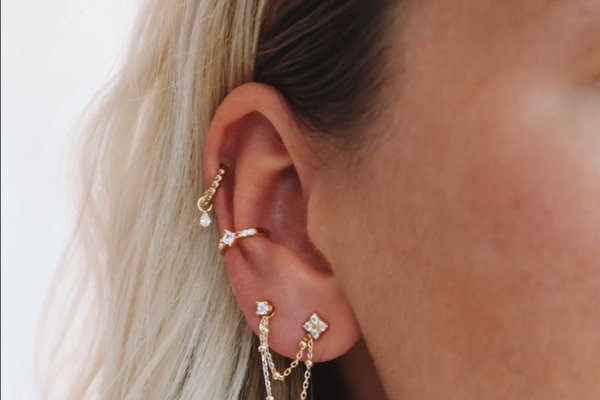
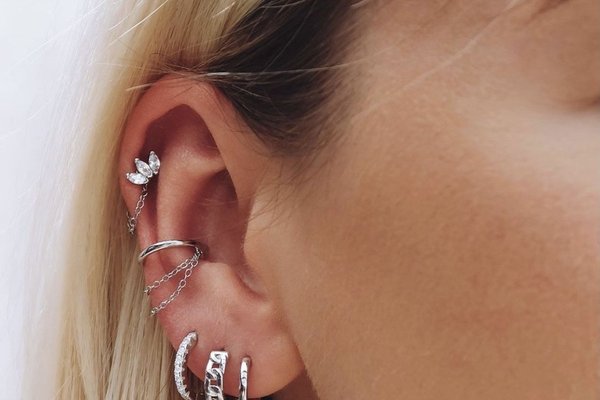
What is a Conch Piercing?
The conch sits in the middle “shell” of the ear.
It can be pierced in two ways: inner (through the flat cartilage next to the ear canal) or outer (towards the rim, where hoops can hug the edge). Because of its central position, the conch often acts as the focal point of an ear design. Small studs give it a clean, polished look, while large rings transform it into a bold statement.
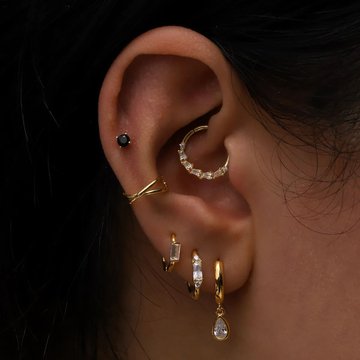
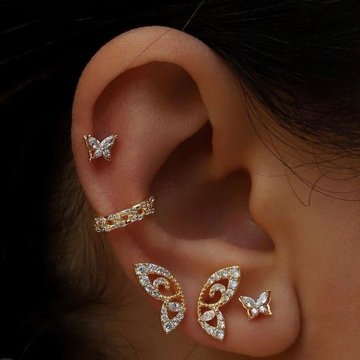
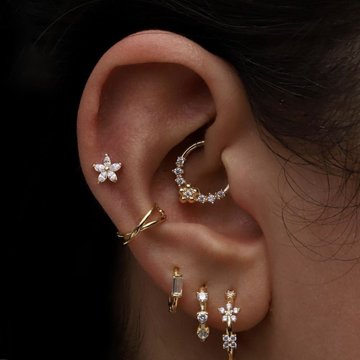
What is a Mid Helix Piercing?
The mid helix piercing is placed halfway along the outer rim of the ear cartilage.
It’s right between the lobe and the upper helix, which makes it balanced and easy to combine with other styles. On its own, it looks refined with a stud or hoop; paired with other piercings, it creates symmetry and structure.
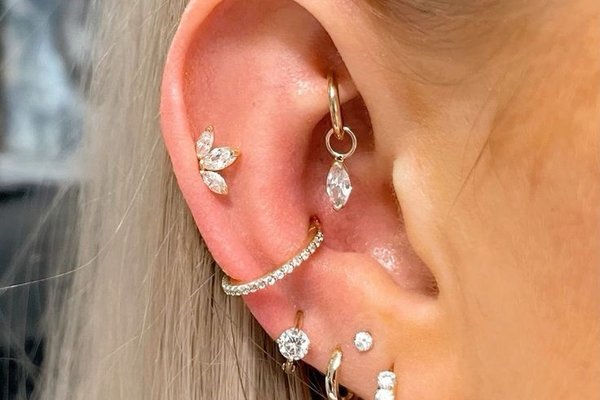
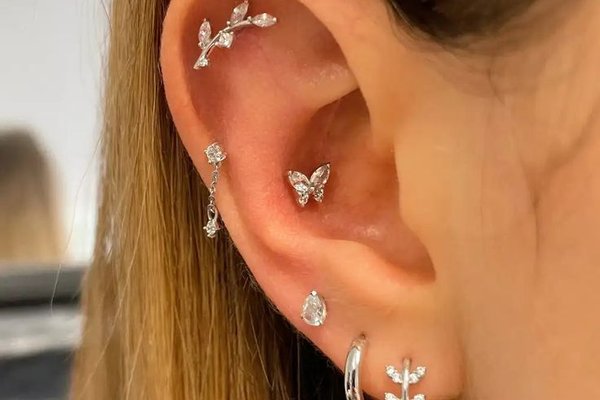
Why Combine Conch
and Mid Helix Piercings?
This pairing has become a favorite because it highlights two different areas of the ear.
- The conch adds depth inside the ear.
- The mid helix frames the outer rim.
- Together, they create a vertical balance.
- Jewelry options are almost endless.
- The set looks good from every angle.
- Works for both minimalist and bold styles.
The conch and mid helix piercing looks especially good in curated ears, where several placements work together as one composition.
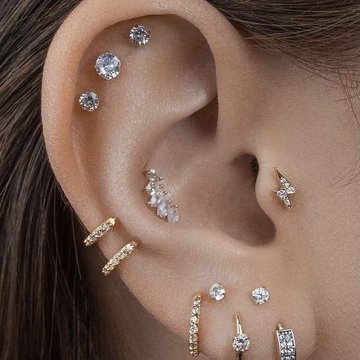
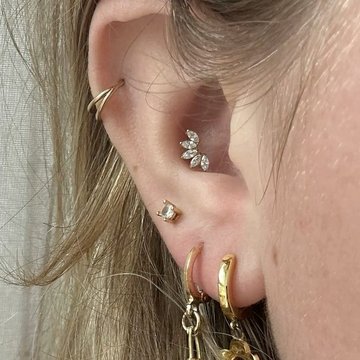
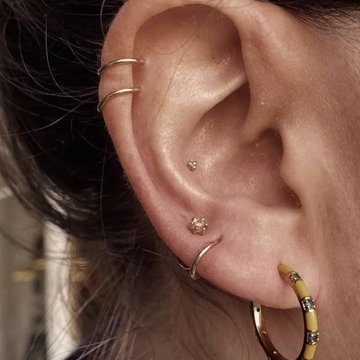
Aesthetic Appeal and Style
The charm of this duo lies in contrast.
The conch is inward and central, while the mid helix is outward and linear. This makes the ear look multidimensional. Clients searching for inspiration often type conch and mid helix piercing ideas, and find setups where a sparkling stud inside the conch pairs beautifully with a thin hoop in the helix. Minimalists can keep both simple, while trendsetters mix metals, stones, or shapes.
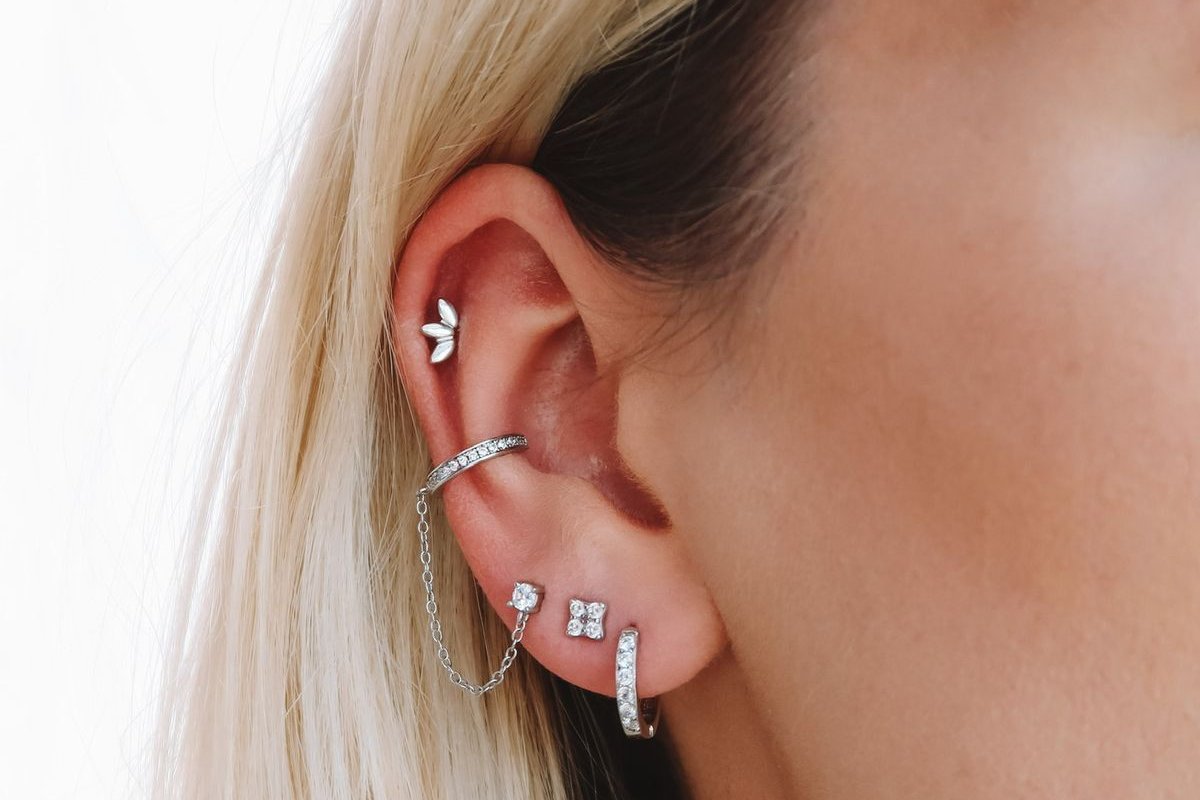
Pain and Healing Process
Since both involve cartilage, the sensation is sharper than a lobe piercing.
The mid helix is considered moderate in pain, while the conch may feel more intense because of the thicker cartilage. Healing times also differ slightly:
- Mid helix: usually 6–9 months.
- Conch: often 9–12 months.
Getting both done at once can be efficient, but it also means managing two healing sites. The main rules: keep the area clean with saline, avoid touching, sleep on the other side, and protect your ear from headphones or helmets.
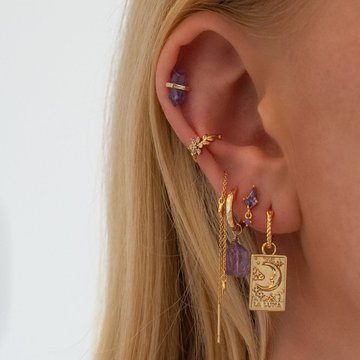
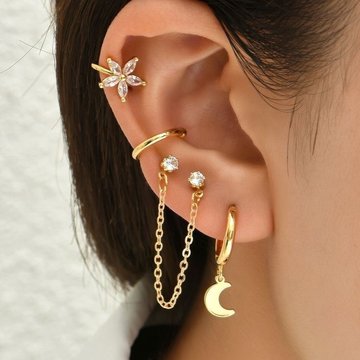
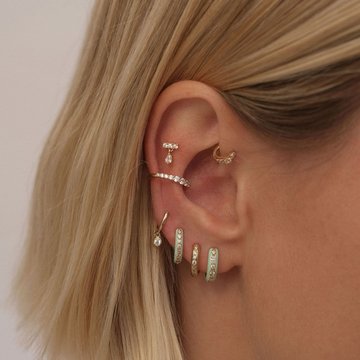
Jewelry Inspiration
Jewelry transforms this combination into a personal statement.
- Coordinated hoops in both placements create symmetry.
- Stud in the conch + hoop in the helix for contrast.
- Matching crystals for a refined look.
- Gold and titanium mix for modern styling.
- Decorative rings in the conch with minimal studs in the helix.
Browsing through conch and mid helix piercing inspiration shows that even small jewelry changes make the entire ear project look different.
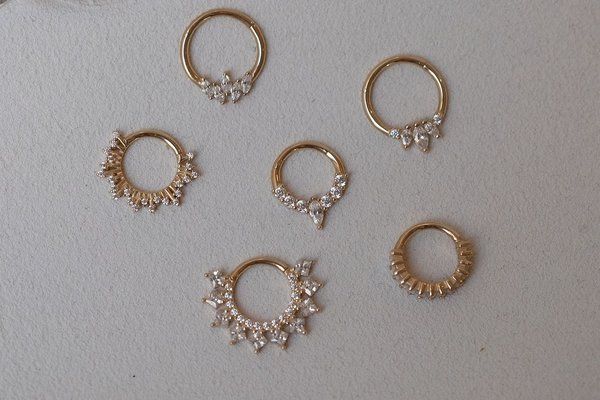
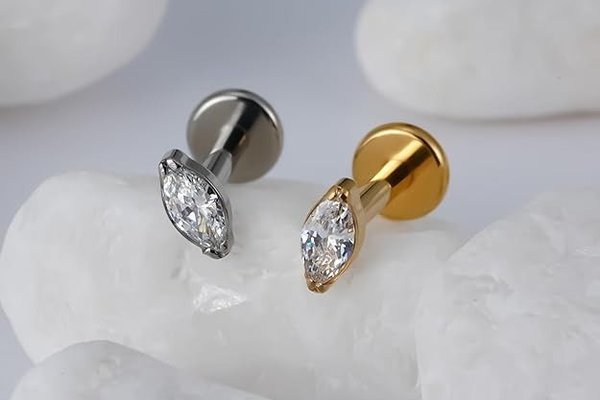
For Men and Women
This combination works for everyone.
Men often choose matte titanium or black steel rings for a clean, strong look. Women frequently combine gems, gold hoops, or layered studs. Thanks to the balance between inner and outer placement, the conch and mid helix piercing can adapt to many different aesthetics.

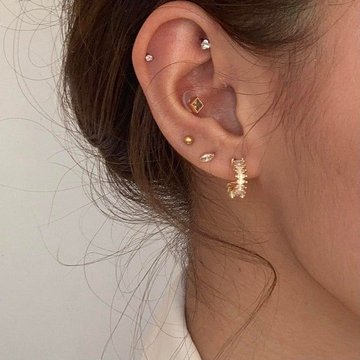
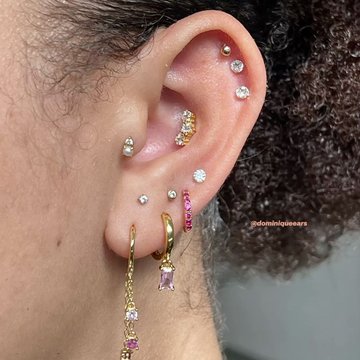
Why Choose Professionals?
Cartilage requires accuracy.
The conch passes through thick tissue; the helix sits on a narrow rim. Only a trained piercer can measure the correct angles, keep both placements symmetrical, and minimize trauma. Professional studios also provide follow-up downsizing once swelling reduces, improving both comfort and appearance. Getting this combination done in unsafe conditions risks misplacement, infection, or permanent irritation.
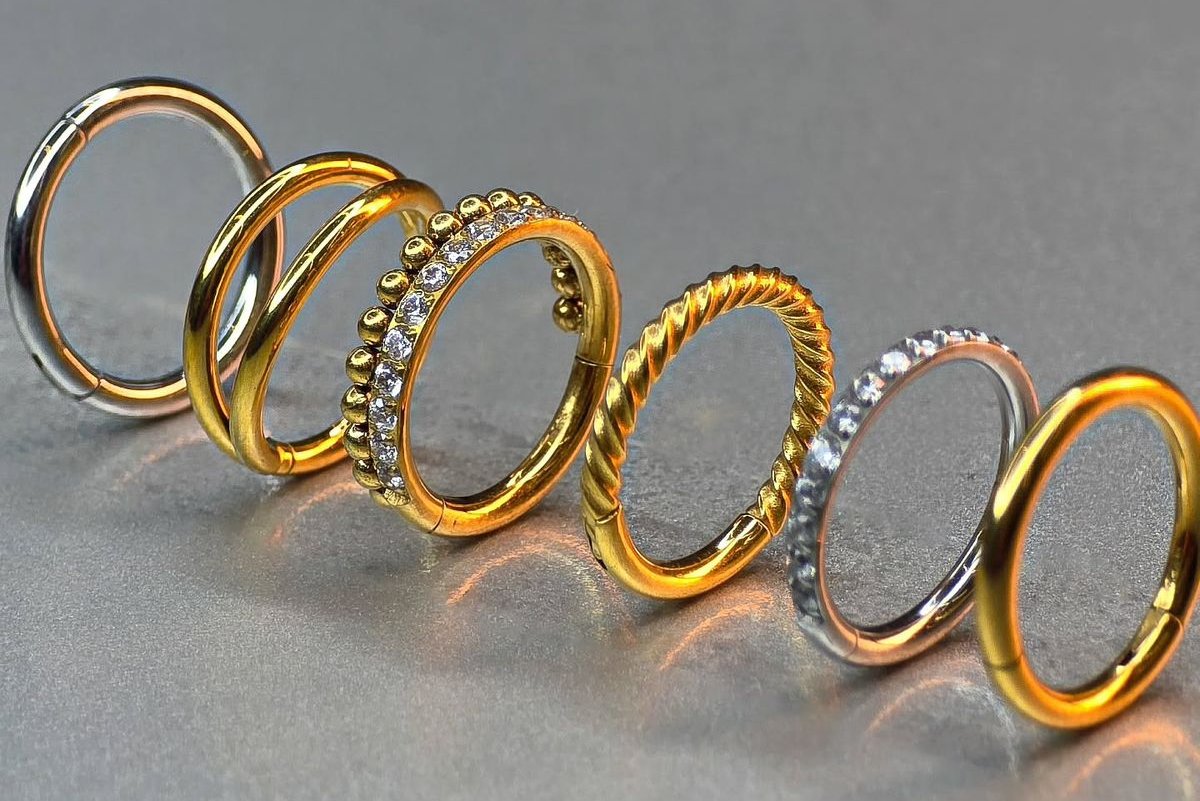
Aftercare Timeline
- Week 1–2: swelling, soreness, mild redness.
- Weeks 3–6: clean daily with saline, avoid side-sleeping.
- Months 2–4: tissue strengthens, occasional irritation bumps possible.
- Months 5–9: mid helix often healed by this point.
- Months 9–12: conch stabilizes, jewelry changes possible with piercer approval.
Healing is not linear — some days feel better, some worse. The key is patience and consistency.
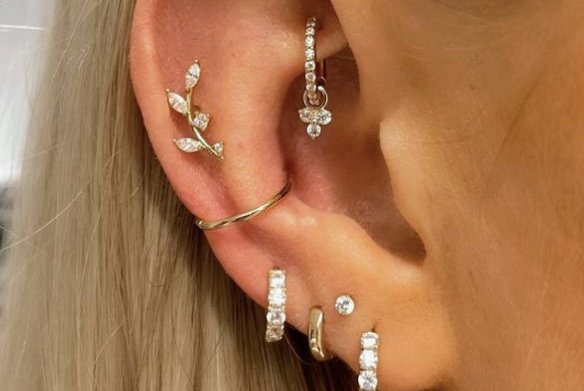
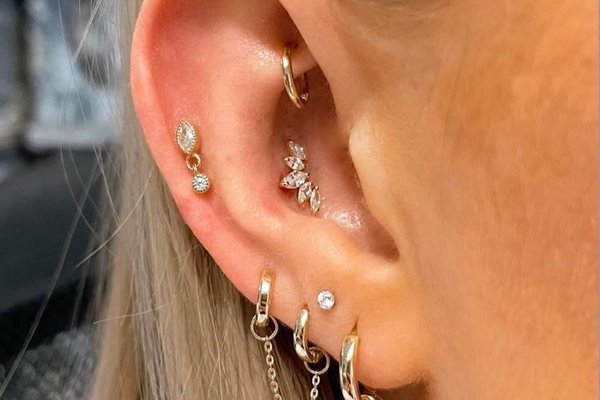
The conch and mid helix piercing is one of the most balanced, eye-catching combinations in ear styling.
Together, they create depth, symmetry, and countless jewelry options. If you’re ready to try this duo, book an appointment at VEAN TATTOO. Our professional piercers ensure precise placement, sterile conditions, and provide detailed aftercare support. With proper guidance, this set will heal beautifully and become a lasting highlight of your personal style.
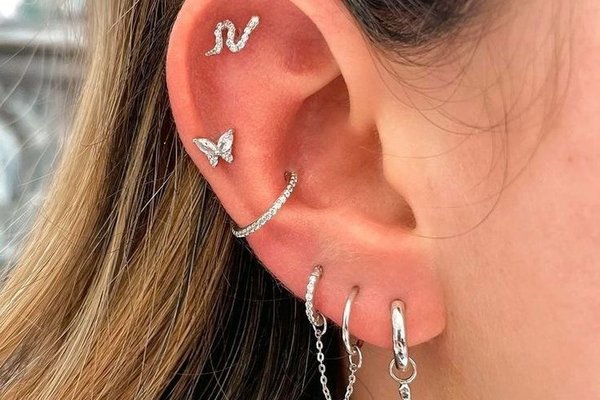
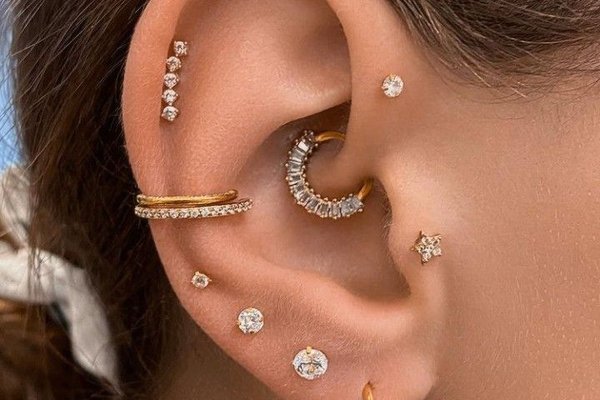


 Make a sketch in the AI VEAN TATTOO generator
Make a sketch in the AI VEAN TATTOO generator




